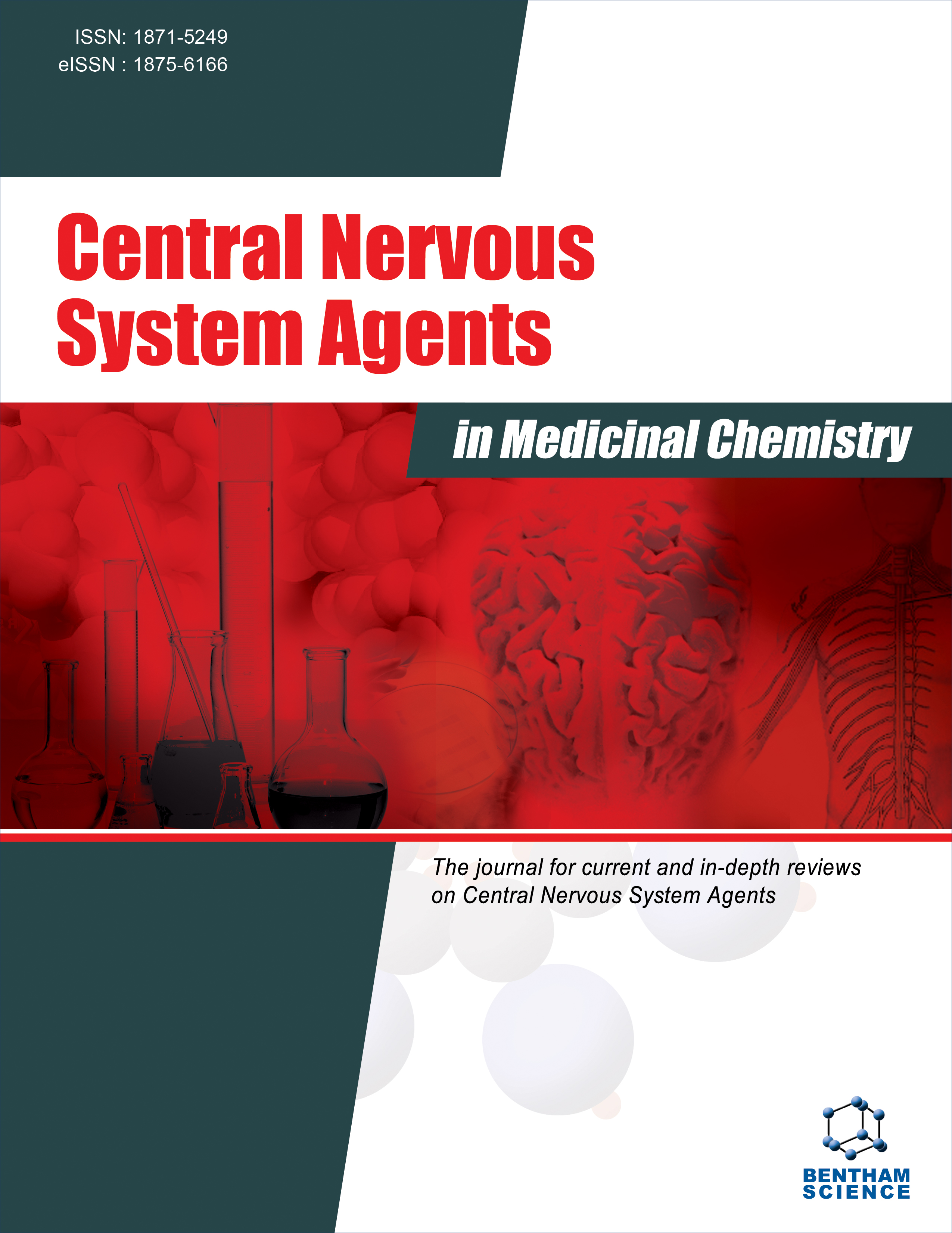- Home
- A-Z Publications
- Central Nervous System Agents in Medicinal Chemistry (Formerly Current Medicinal Chemistry - Central Nervous System Agents)
- Previous Issues
- Volume 12, Issue 3, 2012
Central Nervous System Agents in Medicinal Chemistry (Formerly Current Medicinal Chemistry - Central Nervous System Agents) - Volume 12, Issue 3, 2012
Volume 12, Issue 3, 2012
-
-
Central Nervous System Acting Drugs in Treatment of Migraine Headache
More LessMigraine is a primary headache disorder with an unknown pathophysiology. The growing evidence in recent years indicates migraine being a brain disorder, a sensory dysmodulation, and a system failure of normal sensory processing of the brainstem that involves the vascular tone and pain. At the moment, triptan family and NSAIDs are the first choice drugs for the treatment of acute migraine. There are several prophylactic dr Read More
-
-
-
GEMSP: A New Therapeutic Approach to Multiple Sclerosis
More LessA new therapeutic approach called Endotherapia (GEMSP) for the treatment of Multiple Sclerosis (MS) is suggested. Endotherapia is the result of an immunopathological strategy addressing chronic incurable diseases with a multifactorial etiology. This approach combines a biomedical evaluation of circulating immunoglobulins directed against specific self-antigens and self-antigens modified by free radicals. GEMSP is a “tailor-mad Read More
-
-
-
A Role of Immunotherapy in Metastatic Malignant Melanoma
More LessAuthors: Timothy Allen and Lavanya GundrajakuppamMalignant melanoma is a tumor of the melanocytes of the skin with different types, that can metastasize to many organs including the brain at the advanced stages. Metastasis to brain is most dreadful complication, and at times untreatable as it's noted in the late stages. Therefore, tremendous effort has been made in the past decades to treat metastatic melanoma patients more efficiently. Although chemotherapy i Read More
-
-
-
Melatonin and Synthetic Melatonergic Agonists: Actions and Metabolism in the Central Nervous System
More LessAuthors: R. Hardeland and B. PoeggelerThe CNS is both source and target of melatonin. This methoxyindole formed in the pineal gland is also produced in other CNS regions and additionally enters the brain by uptake from the circulation as well as via the pineal recess. The mammalian circadian pacemaker, the suprachiasmatic nucleus (SCN), not only controls the pineal, but also receives a feedback information on darkness. Two G protein-couple Read More
-
-
-
Emerging RNA-based Drugs: siRNAs, microRNAs and Derivates
More LessAuthors: Tiago Campos Pereira and Iscia Lopes-CendesAn emerging new category of therapeutic agents based on ribonucleic acid has emerged and shown very promising in vitro, animal and pre-clinical results, known as small interfering RNAs (siRNAs), microRNAs mimics (miRNA mimics) and their derivates. siRNAs are small RNA molecules that promote potent and specific silencing of mutant, exogenous or aberrant genes through a mechanism known as RNA interference. These Read More
-
-
-
The Atypical Cannabinoid O-1602: Targets, Actions, and the Central Nervous System
More LessO-1602 is a cannabidiol analogue that does not bind with high affinity to either the cannabinoid CB1 receptor or CB2 receptor. However, there is evidence that O-1602 has significant effects in the central nervous system as well as other parts of the body. Depending upon the model, O-1602 has anti-inflammatory or pronociceptive effects, mediated through a number of distinct receptors. This article reviews the evidence for f Read More
-
Volumes & issues
-
Volume 25 (2025)
-
Volume 24 (2024)
-
Volume 23 (2023)
-
Volume 22 (2022)
-
Volume 21 (2021)
-
Volume 20 (2020)
-
Volume 19 (2019)
-
Volume 18 (2018)
-
Volume 17 (2017)
-
Volume 16 (2016)
-
Volume 15 (2015)
-
Volume 14 (2014)
-
Volume 13 (2013)
-
Volume 12 (2012)
-
Volume 11 (2011)
-
Volume 10 (2010)
-
Volume 9 (2009)
-
Volume 8 (2008)
-
Volume 7 (2007)
-
Volume 6 (2006)
Most Read This Month
Article
content/journals/cnsamc
Journal
10
5
false
en


